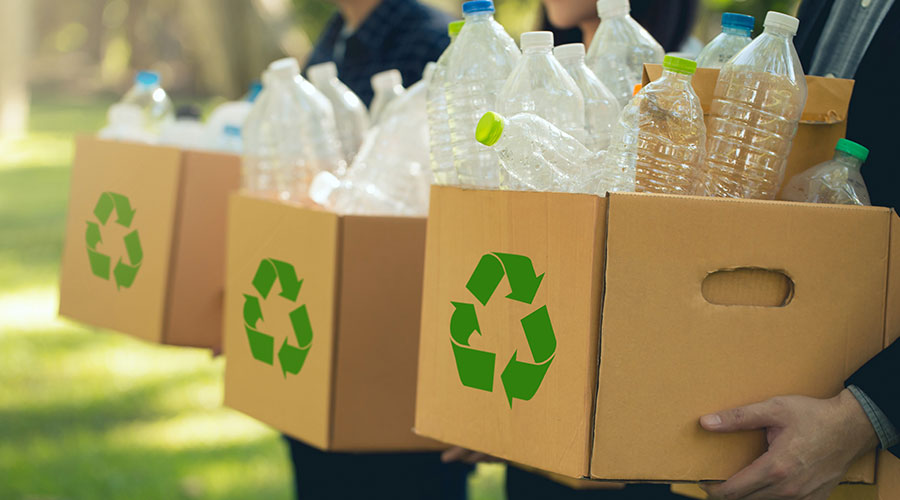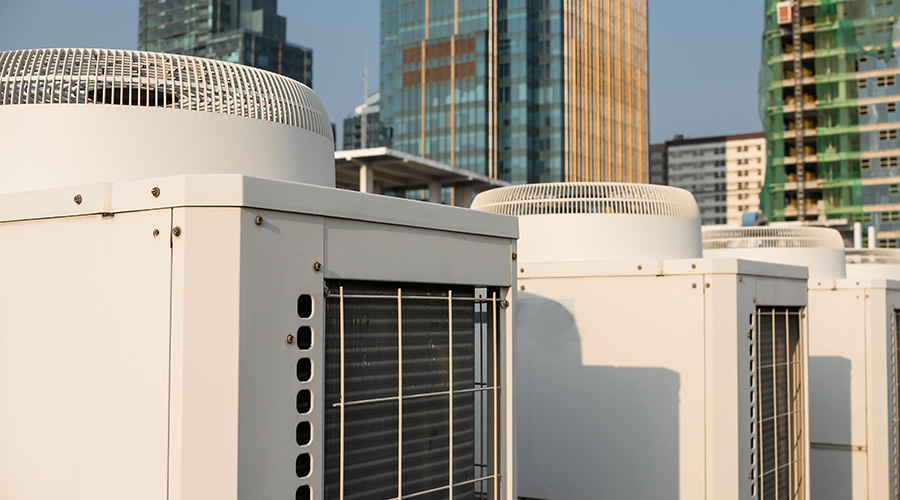Restroom Revolution
Plumbing products are changing the way managers think
Saving water has always saved money. But rising water costs are prompting many maintenance and engineering managers to step up their efforts to control water use in their facilities by implementing water-saving plumbing technologies in restrooms.
The demand for water-saving fixtures has gained momentum quickly in recent years, says John Watson, director of technical support for Sloan Valve Co. Programs that encourage green design and practices, such as the U.S. Green Building’s Leadership in Energy and Environmental Design (LEED) program, have bolstered the demand for these technologies. Just as importantly, they have helped organizations realize financial benefits of water-saving fixtures.
“It’s nice to be green and environmentally friendly, but it’s also nice when you can reap other benefits, such as improving your bottom line,” Watson says.
In response to these changes in the market, manufacturers are improving their products and introducing new technologies that make it easier for managers to retrofit and maintain their facilities’ restrooms.
Touch-free Advantage
In addition to improving hygiene, touch-free restroom fixtures can help organizations eliminate water waste. While these fixtures have been around for more than 15 years, many organizations still haven’t implemented touch-free technology, says Jon Dommisse, director of marketing and product development with Bradley Corp.
“There are definitely a significant number of organizations that still need to make the switch,” he says, adding that about 50 percent of institutional and commercial facilities still use hand-operated fixtures.
Large facilities, such as airports, convention centers, and casinos, were the among first organizations to convert to touch-free fixtures, adds Jerry McDermont, executive vice president of marketing and development at Technical Concepts.
“There are a tremendous amount of other facilities, such as schools and offices, that still have not automated their fixtures,” he says. Performance issues might be one reason many organizations have been slow to implement touch-free technology: Most first-generation touchless fixtures didn’t perform well.
“The fixtures were not reliable,” Dommisse says. “They shorted out, and there were a lot of problems with sensor-activated fixtures setting each other off.”
As a result, many managers didn’t trust electronic fixtures and stuck with traditional manual faucets, even though they might have dripped and wasted water.
Managers who had a bad experience with first-generation touch-free fixtures might have hesitated to try them again.
“It took a number of years for the average manager to warm back up to considering electronic technologies in the restroom,” Dommisse says. “I think in the past three to four years, companies have really integrated a lot of higher-quality technology into plumbing fixtures that are far more reliable than the historical fixtures.”
Says McDermont, “We’re now seeing a lot of organizations, such as schools and offices, change to touch-free equipment. I think they just wanted to make sure the technology worked and give it a chance to mature, which it did.”
Maintenance Considerations
The first touch-free fixtures also were more difficult to repair and maintain than today’s generation of equipment.
“When electronics in these fixtures broke, maintenance was a little tougher because technicians maybe didn’t fully understand how these products worked,” Watson says.
Now, electronic plumbing fixtures are much easier to maintain. For example, technicians had to take nearly everything off a first-generation automatic flush valve to change the batteries.
“Since then, manufacturers have created smarter designs,” Watson says. Technicians now just need to loosen two screws on an automatic flush valve to access the entire module and change the battery pack.
Manufacturers are making further advances that make touch-free fixtures even easier to maintain. For example, some new models incorporate photovoltaic technology. Because these fixtures collect energy from light to generate their power, they don’t require batteries. Not only do these fixtures help maintenance departments save time. They also help organizations reduce their energy use.
Lower Flow, Higher Performance
Low-flow toilets also have improved dramatically over the past 10-15 years.
“Today, 1.6-gallon toilets are finally making gains in the marketplace,” Dommisse says. “The first ones that came out didn’t flush well, and maintenance departments didn’t have time to unplug toilets. So a lot of managers didn’t upgrade their toilets because they didn’t trust the new technology. Now, the performance of these fixtures is much better, and they are very effective in saving organizations hundreds of thousands of gallons of water.”
Waterless Urinals
The increasing demand — and cost — for water has led managers to take a closer look at waterless urinals, which manufacturers introduced in the 1990s. While many managers might be considering waterless urinals, few have actually installed the fixtures in their facilities.
“Of the total urinal market, about one half of one percent has been converted to waterfree urinals,” says Randy Goble, vice president of marketing at Falcon Waterfree Technologies.
Managers often hesitate to install waterless urinals because of misunderstandings about the products.
“Everybody quickly understands the water-saving and financial benefits of waterless urinals,” Goble says. “But most people seem skeptical when you start talking about how waterless urinals harbor fewer bacteria and produce less odor than manual or auto-flush urinals.”
According to manufacturers, since waterless urinals don’t use water, the units aren’t a breeding ground for bacteria. They also claim that the units eliminate the ammonia odor caused when urine reacts with water to cause ammonia oxide. Finally, they say the sealant liquid in the units’ cartridge is lighter than water and creates an airtight seal, so urine passes through it and becomes trapped beneath.
Just as managers were slow to warm up to touchless and low-flow fixtures, it might take time to convince managers that waterless urinals can perform effectively.
“Sometimes I talk with people who have seen our product some place, like in an airport, and they are surprised it works,” Goble says.
Identifying Solutions
To meet growing demand, more manufacturers are offering touch-free and other water-saving fixtures. This growing range of options might make it more difficult for managers to identify the model best suited to their organizations’ needs.
Managers should be careful about specifying electronic products from manufacturers they never heard of before just because the price is lower than that for a more well-known product.
“If something seems so inexpensive that there has to be something wrong with it, there probably is something wrong with it,” Dommisse says.
Nonetheless, managers shouldn’t rule out new products simply because they’re new.
“One of the biggest mistakes managers make when specifying equipment is not giving themselves a chance to test the different options,” McDermont says. For example, managers might want to compare fixtures that use infrared technology with others that use surround-sensor technology.
Managers also too often specify products that aren’t appropriate for the application. For example, a manager in charge of a facility with a high vandalism rate might try to keep the initial renovation costs down by specifying china sinks and inexpensive faucets.
“The chance of those faucets lasting more than two years is almost zero,” Dommisse says. “Usually, those managers end up getting a higher-quality product to replace the equipment they originally specified and pay 30-40 percent more than if they just would have specified the better product the first time.”
As always, a major challenge for managers will be keeping up with technology.
“I think electronics will become smarter and smaller,” Watson says. For example, the electronics in faucets and flush valves might collect performance information, such as how often they are used, and send that data to a database, where maintenance departments can analyze it to schedule preventive maintenance.
Related Topics:











